The Hidden Value of Walkability: How It Shapes Real Estate and Lifestyle
When people search for a new home, the usual checklist includes things like price, square footage, number of bedrooms, school districts, and maybe a backyard. But there’s another factor that’s quietly shaping property values, community well-being, and even personal health: walkability.
In today’s real estate market, walkability is becoming a sought-after feature—sometimes even as important as granite countertops or open floor plans. Let’s dive into why walkability matters, how it influences home values, and why it might be one of the smartest things buyers and sellers should pay attention to.
What Exactly is Walkability?
Walkability refers to how easy and safe it is for residents to accomplish daily tasks on foot. A “walkable” neighborhood usually offers:
-
Proximity to essential services like grocery stores, schools, and medical offices.
-
Safe pedestrian infrastructure, including sidewalks, crosswalks, and traffic-calming features.
-
Access to leisure spots such as parks, cafés, gyms, and restaurants.
-
Public transit options within walking distance.
Websites like Walk Score have even made walkability measurable, assigning neighborhoods a score between 0–100. The higher the score, the more convenient it is to live there without depending on a car.
Why Walkability is More Than Just Convenience
1. Health & Wellness Benefits
In a walkable community, exercise becomes part of your daily routine. Instead of carving out extra time for the gym, walking to a coffee shop, pharmacy, or the park adds natural movement into your lifestyle. Studies consistently link walkable environments with lower obesity rates, reduced stress, and improved mental health.
2. Environmental Impact
Fewer car trips mean lower carbon emissions. Buyers are increasingly conscious of sustainability, and neighborhoods that support eco-friendly living have a competitive edge. Walkable areas contribute to cleaner air, less noise pollution, and reduced traffic congestion—making them attractive to younger, environmentally aware generations.
3. Economic & Property Value Boost
Real estate research shows that homes in walkable areas often command higher prices compared to similar homes in car-dependent suburbs. Why? Buyers are willing to pay for the convenience and lifestyle perks. Even rental properties in walkable neighborhoods tend to attract tenants faster and can charge slightly higher rents.
4. Social Connection & Community Building
When residents can walk to the local park, farmers’ market, or café, they’re more likely to interact with neighbors. Walkable neighborhoods often have a strong sense of community, and this “social glue” is something buyers can’t put a price tag on.
5. Generational Appeal
-
Millennials & Gen Z: Many prefer living in areas where they can walk to shops, restaurants, and entertainment instead of driving everywhere.
-
Baby Boomers: As they downsize, many want to live in communities where they can walk to healthcare services, stores, and social hubs without relying heavily on cars.
This cross-generational appeal means walkable homes often attract a wider pool of buyers.
How Buyers Can Assess Walkability
If you’re a buyer, don’t stop at looking at square footage and finishes—consider how the neighborhood feels on foot. Here’s what to look for:
-
Walk Score Research: Check online tools that rate walkability.
-
Visit in Person: Walk around at different times of day. Notice lighting, traffic, and pedestrian activity.
-
Sidewalks & Safety: Are there well-maintained sidewalks, crosswalks, and speed limits designed for pedestrians?
-
Access to Daily Essentials: See what’s within a 10–15 minute walk—grocery stores, transit stops, schools, or pharmacies.
-
Lifestyle Amenities: Parks, gyms, restaurants, and coffee shops add both value and joy to daily life.
How Sellers Can Leverage Walkability in Listings
If you’re selling a property in a walkable neighborhood, don’t underestimate how powerful this can be in marketing. Highlight features like:
-
“Walking distance to schools, shops, and dining”
-
“Five minutes to the train station”
-
“Enjoy weekend strolls to the local park or farmers’ market”
Buyers often imagine how they’ll live in a space. Painting a picture of daily convenience can make your listing stand out—even if the home itself doesn’t have every “luxury” feature.
The Future: 15-Minute Cities and Walkable Communities
Urban planners are increasingly embracing the concept of 15-minute cities—neighborhoods designed so that everything residents need (work, shopping, healthcare, recreation) is within a 15-minute walk or bike ride.
This trend is gaining global traction and signals a shift toward valuing convenience, sustainability, and quality of life. For investors, this means properties in walkable or mixed-use communities may hold strong long-term value.
Key Takeaway
Walkability is more than just a real estate buzzword. It’s a lifestyle choice that influences property values, health, sustainability, and community connection. For buyers, prioritizing walkability can mean a richer, more convenient daily life. For sellers, showcasing this hidden value can set your listing apart in a competitive market.
So next time you evaluate a property, don’t just count the bedrooms—count the steps to the coffee shop, the park, or the local school. It might just be the factor that transforms a house into a true home.
Don't hesitate to contact Me!
908-377-4240 julie@juliesrealtygroup.com
or
Visit my Social media
Categories
Recent Posts










GET MORE INFORMATION



